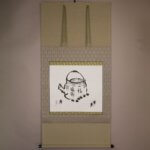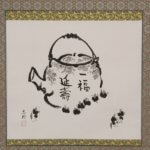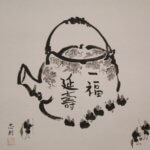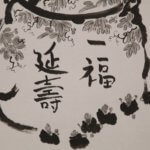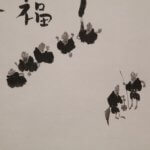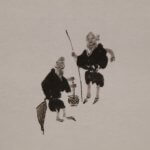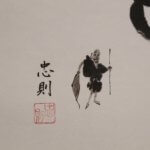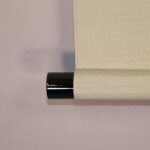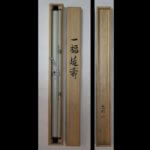Kakejiku Hanging Scroll: Ippuku Enju / Ōmori Tadanori - Ippuku Enju
- Product ID
- B0072
- Name
- Ōmori Tadanori
- Profile
A Japanese-style painter. In 1933, born in Ōsaka Pref. A frequent prize winner. Specialized in landscape paintings and bird-and-flower painting.
- Size
- 725mm x 1400mm
- Roller End Material
Wood coated with black "urushi" (lacquer)- Material of the Work
- Japanese paper
- Stock Condition
- Sold out
- Description
A unique calligraphic work with “Ippuku Enju” written on the Japanese teapot painting. “Ippuku Enju” is a Zen word that means “a heart that can be grateful for small happiness leads to longevity.” This work is a very unique work by Japanese-style painter Ōmori Tadanori, who drew a teapot while playing words with “一服 Ippuku (Drinking tea and taking a rest)”, which has the same pronunciation as 一福 Ippuku (small happiness). The message telling “it is important to have a heart that can thank you for the happiness of drinking a cup of tea” can be read from this work and is very tasty. I wonder if the monks drawn around the teapot were drinking tea and talking about this Zen word. Each person’s facial expression is different, and it is a work that stirs up various imaginations.


